Hair Rejuvenation Treatment: Revitalizing Your Locks
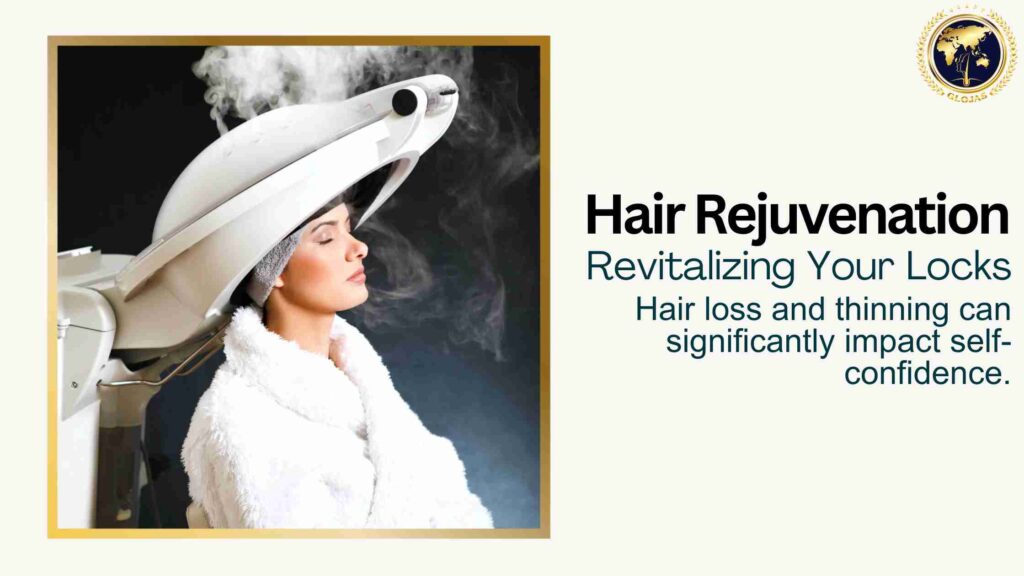
Hair loss and thinning can significantly impact self-confidence. Fortunately, advancements in hair restoration have led to the development of various hair rejuvenation treatments. This blog explores the different options available and highlights the expertise offered by GLOJAS Clinic. Understanding Hair Rejuvenation: Restoring Hair Health Hair rejuvenation encompasses a range of treatments aimed at stimulating hair growth, improving hair density, and enhancing overall hair health. These treatments typically address issues such as thinning hair, hair loss, and scalp conditions. Common Hair Rejuvenation Treatments Several effective hair rejuvenation treatments are available: Platelet-Rich Plasma (PRP) Therapy: This involves injecting concentrated platelets into the scalp to stimulate hair growth and promote healing. Low-Level Laser Therapy (LLLT): Low-level lasers are used to stimulate hair follicles and promote hair growth. Microneedling: This procedure involves creating tiny punctures in the scalp to stimulate collagen production and enhance hair growth. Choosing the Right Treatment: Personalized Approach The best hair rejuvenation treatment depends on individual factors such as the cause of hair loss, severity, and desired outcome. A consultation with a qualified dermatologist or trichologist is essential to determine the most suitable approach. Why Choose GLOJAS Clinic for Hair Rejuvenation? At GLOJAS Clinic, we understand the emotional impact of hair loss and offer a comprehensive range of hair rejuvenation treatments. Here’s why we stand out: Experienced Dermatologists: Our team of qualified dermatologists specializes in hair loss and offers personalized treatment plans. Advanced Treatment Options: We utilize the latest technology and techniques to deliver effective hair rejuvenation results. Comprehensive Hair Analysis: We conduct thorough scalp assessments to identify the underlying causes of hair loss. Focus on Patient Well-being: We prioritize patient comfort and satisfaction throughout the treatment process. Holistic Hair Care Approach: We offer a combination of treatments and lifestyle advice for optimal hair health. Hair loss can be a challenging experience, but with the right treatment and support, you can regain your confidence and achieve healthier, thicker hair. GLOJAS Clinic is dedicated to helping you achieve your hair goals. Schedule a consultation with our team today. We can assess your hair condition, discuss treatment options, and create a personalized plan to help you rejuvenate your hair. Don’t let hair loss define you – take the first step towards healthier, fuller hair with GLOJAS Clinic! Facebook Twitter LinkedIn Reddit Pinterest WhatsApp
Endolift Treatment: The Ultimate Skin Rejuvenation Solution

Endolift is a cutting-edge, non-surgical procedure that utilizes laser technology to rejuvenate the skin from within. It offers a minimally invasive alternative to traditional facelifts, providing a more youthful and refreshed appearance. This blog explores the benefits of Endolift treatment and why GLOJAS Clinic is a leading provider in this field. Understanding Endolift Treatment: How it Works Endolift involves the use of a thin laser fiber inserted under the skin. This fiber delivers controlled laser energy, stimulating collagen production and fat reduction. Key benefits include: Skin Tightening: The laser energy contracts collagen fibers, resulting in firmer and more lifted skin. Fat Reduction: Endolift can help reduce localized fat deposits in the treated area. Improved Skin Texture: Stimulated collagen production leads to smoother and more radiant skin. Minimal Downtime: Unlike traditional surgical facelifts, Endolift requires minimal recovery time. View this post on Instagram A post shared by GLOJAS AESTHETIC SPECIALIST (@glojasaesthetic) Benefits of Endolift Treatment: A Younger, Fresher You Endolift offers a range of advantages over traditional facelifts: Non-Surgical Approach: Avoids the risks and downtime associated with surgery. Precise Targeting: Laser energy is delivered directly to the treatment area, minimizing damage to surrounding tissues. Natural-Looking Results: Endolift promotes a subtle and natural rejuvenation, avoiding an overly “done” appearance. Versatility: The treatment can be used on various areas, including the face, neck, and body. Why Choose GLOJAS Clinic for Your Endolift Treatment? At GLOJAS Clinic, we are committed to providing advanced and effective skincare solutions. Here’s why we stand out: Experienced Medical Professionals: Our team comprises highly skilled medical professionals with expertise in laser treatments. State-of-the-Art Technology: We utilize the latest Endolift technology for optimal results and patient comfort. Personalized Treatment Plans: We offer customized treatment plans based on your individual skin concerns and goals. Focus on Patient Satisfaction: Your comfort and well-being are our top priorities. Natural-Looking Results: We strive to enhance your natural beauty while avoiding an artificial appearance. Endolift is a revolutionary treatment that can help you achieve a more youthful and refreshed look. GLOJAS Clinic offers the expertise and technology to deliver exceptional results. Schedule a consultation with our team today. We can assess your skin concerns, discuss the benefits of Endolift, and create a personalized treatment plan for you. Don’t wait to unveil your natural radiance with GLOJAS Clinic! Facebook Twitter LinkedIn Reddit Pinterest WhatsApp
Harga Tanam Rambut: Panduan Lengkap Untuk Memahami Kos dan Faktor-faktor Yang Mempengaruhi

Harga Tanam Rambut Terbaik Untuk Transformasi Rambut Anda Harga Tanam Rambut untuk rawatan tanam rambut, atau dalam bahasa perubatannya dikenali sebagai “hair transplant,” semakin popular di kalangan individu yang menghadapi masalah keguguran rambut. Prosedur ini bukan hanya tentang mendapatkan rambut yang lebih tebal dan sihat tetapi juga berkaitan dengan kos yang perlu dipertimbangkan sebelum membuat keputusan. Artikel ini akan membincangkan secara terperinci mengenai harga tanam rambut di Malaysia, faktor-faktor yang mempengaruhi kos, dan apa yang boleh anda jangkakan daripada prosedur ini. Apa Itu Tanam Rambut? Tanam rambut adalah prosedur pembedahan yang melibatkan pemindahan folikel rambut dari kawasan yang mempunyai rambut lebat (biasanya di belakang kepala) ke kawasan yang mengalami kebotakan atau kekurangan rambut. Terdapat beberapa teknik yang digunakan dalam tanam rambut, termasuk: 1. Teknik Follicular Unit Extraction (FUE) : Folikel rambut diambil satu persatu dari kawasan penderma dan dipindahkan ke kawasan yang memerlukan.2. Teknik Follicular Unit Transplantation (FUT) : Sebuah jalur kulit yang mengandungi folikel rambut diambil dari kawasan penderma dan kemudian dipisahkan menjadi unit folikel sebelum ditanam. Faktor-Faktor Yang Mempengaruhi Harga Tanam Rambut Harga tanam rambut boleh berbeza dengan ketara bergantung kepada beberapa faktor. Berikut adalah beberapa elemen utama yang mempengaruhi kos prosedur ini: 1. Kawasan Geografi : Kos tanam rambut berbeza bergantung pada lokasi klinik. Di bandar-bandar besar seperti Kuala Lumpur, George Town, atau Johor Bahru, harga mungkin lebih tinggi berbanding di kawasan luar bandar. 2. Pengalaman dan Kepakaran Pakar : Pakar bedah yang mempunyai pengalaman dan kepakaran yang tinggi akan mengenakan bayaran yang lebih tinggi. Kepakaran dan reputasi klinik juga memainkan peranan penting dalam menentukan kos. 3. Jumlah Folikel Rambut : Kos biasanya dikira berdasarkan bilangan folikel rambut yang dipindahkan. Semakin banyak folikel yang diperlukan, semakin tinggi kosnya. 4. Teknik Yang Digunakan : Teknik FUE biasanya lebih mahal daripada teknik FUT kerana ia memerlukan masa dan kemahiran yang lebih tinggi untuk dilakukan. 5. Kemudahan dan Peralatan : Klinikal yang menggunakan peralatan canggih dan menyediakan kemudahan yang selesa biasanya mengenakan harga yang lebih tinggi. 6. Kos Tambahan : Kos lain seperti pemeriksaan awal, konsultasi, dan rawatan susulan juga perlu diambil kira. Harga Tanam Rambut di Malaysia Di Malaysia, kos untuk prosedur tanam rambut boleh bervariasi. Secara amnya, harga boleh berkisar antara RM8,000 hingga RM25,000 bergantung kepada faktor-faktor yang telah dinyatakan. Berikut adalah pecahan kasar kos berdasarkan teknik dan bilangan folikel: 1. Teknik FUE : Kosnya biasanya antara RM10,000 hingga RM25,000. Harga ini adalah untuk bilangan folikel yang boleh mencapai sehingga 4,000 hingga 5,000 unit. 2. Teknik FUT : Kos untuk teknik ini adalah antara RM8,000 hingga RM15,000. Harga ini bergantung pada jumlah folikel yang diperlukan dan kompleksiti prosedur. Apa Yang Termasuk Dalam Harga Tanam Rambut? Biasanya, harga tanam rambut merangkumi beberapa perkara berikut: 1. Konsultasi Awal : Pertemuan pertama dengan pakar bedah untuk menilai keadaan rambut dan menentukan pelan rawatan. 2. Prosedur Pembedahan : Kos untuk pembedahan itu sendiri, termasuk segala peralatan dan bahan yang digunakan. 3. Rawatan Selepas Pembedahan : Tempoh pemulihan yang termasuk ubat-ubatan dan rawatan susulan untuk memastikan hasil yang optimum. 4. Pemeriksaan Berkala : Beberapa klinik mungkin menyediakan pemeriksaan berkala untuk memantau perkembangan selepas prosedur. Persediaan Sebelum Tanam Rambut Sebelum menjalani prosedur tanam rambut, terdapat beberapa perkara yang perlu anda pertimbangkan dan persiapkan: 1. Konsultasi Dengan Pakar : Dapatkan konsultasi dengan pakar bedah untuk memahami dengan jelas apa yang akan berlaku semasa dan selepas prosedur. Ini juga masa yang baik untuk bertanya mengenai kos dan apa yang termasuk dalam harga. 2. Periksa Klinik dan Pakar : Pastikan klinik dan pakar bedah mempunyai reputasi yang baik dan berpengalaman dalam prosedur ini. Semak ulasan dari pesakit sebelum ini dan pastikan klinik itu mendapat kelulusan yang diperlukan. 3. Pertimbangkan Pilihan Pembayaran : Beberapa klinik mungkin menawarkan pelan pembayaran ansuran atau pembiayaan untuk memudahkan pembayaran. Pemulihan Selepas Prosedur Pemulihan selepas tanam rambut memerlukan masa dan penjagaan yang betul. Anda mungkin mengalami beberapa kesan sampingan seperti kemerahan, bengkak, atau ketidakselesaan pada kawasan yang dirawat. Walau bagaimanapun, ini adalah perkara biasa dan biasanya akan hilang dalam beberapa hari. Berikut adalah beberapa tip untuk pemulihan yang berjaya: 1. Ikuti Arahan Pakar : Pastikan anda mengikuti arahan pasca-pembedahan yang diberikan oleh pakar. Ini mungkin termasuk pengambilan ubat, elakkan aktiviti fizikal yang berat, dan penjagaan khusus untuk kawasan yang dirawat. 2. Elakkan Menggaru Kepala : Menggaru kawasan yang baru ditanam boleh merosakkan folikel rambut yang baru ditanam dan mengganggu proses pemulihan. 3. Gunakan Produk Yang Disyorkan : Gunakan produk penjagaan rambut yang disyorkan oleh pakar untuk membantu memulihkan dan mempercepatkan pertumbuhan rambut. 4. Jadual Pemeriksaan Susulan : Hadiri semua temujanji susulan yang dijadualkan untuk memantau kemajuan dan memastikan segala-galanya berjalan lancar. View this post on Instagram A post shared by GLOJAS HAIR TRANSPLANT SPECIALIST MALAYSIA (@fuehairtransplantmalaysia) Kesimpulan Tanam rambut adalah pelaburan jangka panjang dalam penampilan dan keyakinan diri. Memahami kos dan faktor-faktor yang mempengaruhi harga adalah langkah penting sebelum memutuskan untuk menjalani prosedur ini. Dengan persiapan yang betul dan pemilihan klinik yang sesuai, anda boleh memastikan hasil yang memuaskan dan pengalaman yang positif. Jika anda mempertimbangkan tanam rambut, ambil masa untuk menyelidik dan berbincang dengan pakar untuk membuat keputusan yang terbaik berdasarkan keadaan anda. Dengan persiapan dan maklumat yang tepat, anda boleh memulakan perjalanan menuju rambut yang lebih sihat dan keyakinan diri yang lebih tinggi. BACA ARTIKEL : Rawatan Tanam Rambut , Tanam Jambang
FUE Hair Transplant Cost in Singapore: What Is The Cheaper Option?
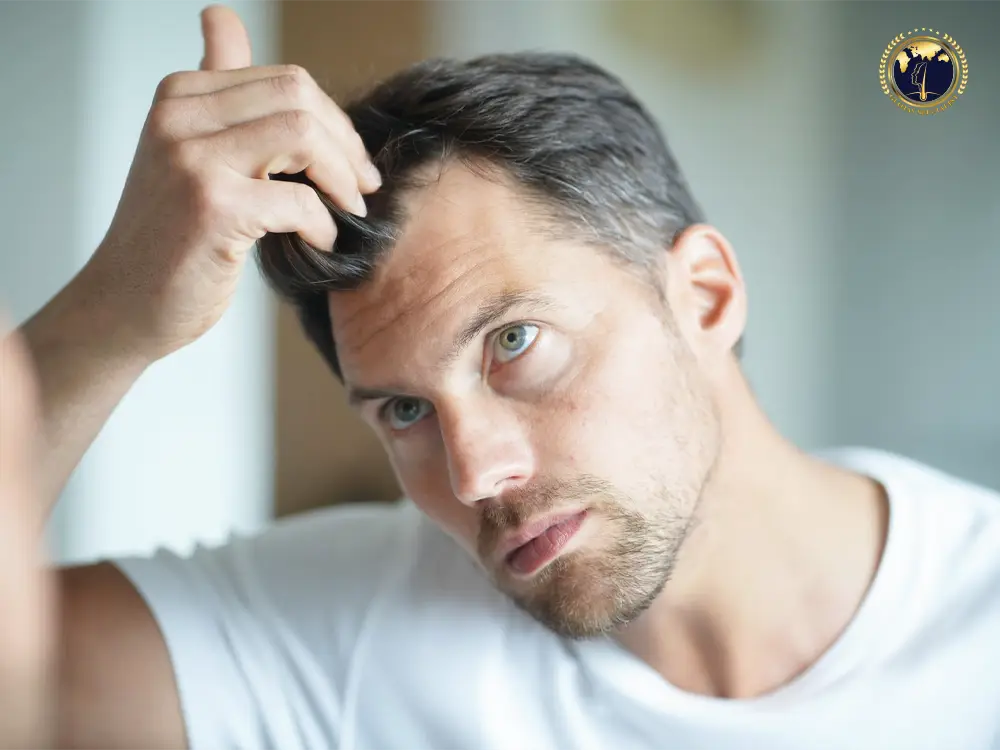
Introduction Hair loss is a common issue affecting both men and women globally, and Singapore is no exception. Follicular Unit Extraction (FUE) is a popular hair restoration technique in Singapore, known for its minimally invasive nature and natural-looking results. If you’re considering this procedure, understanding the cost factors involved is crucial. Overview of FUE Hair Transplant FUE hair transplant involves extracting individual hair follicles from a donor area, typically the back of the scalp, and transplanting them to the thinning or balding areas. This technique is favored for its precision, minimal scarring, and quicker recovery time compared to traditional strip harvesting methods. Factors Influencing the Cost of FUE Hair Transplant in Singapore Clinic Reputation and Expertise: Reputable hair transplant clinics with experienced surgeons often charge higher fees due to their expertise and success rates. Choosing a clinic with a proven track record ensures better results and reduces the risk of complications. Number of Grafts: The total cost of an FUE hair transplant largely depends on the number of grafts required. The more extensive the hair loss, the more grafts you’ll need, which increases the overall cost. On average, patients may need between 1,000 to 3,000 grafts, depending on the severity of their hair loss. Technology and Equipment: Clinics that use advanced technology and state-of-the-art equipment may charge higher prices. Modern FUE techniques, such as robotic-assisted transplants, can offer more precise and efficient results, which may justify the additional cost. Location of the Clinic: The geographical location of the clinic also impacts the cost. In Singapore, hair transplant clinics located in prime areas or those with luxurious facilities might charge more. However, it’s important to note that higher prices do not always equate to better quality. Additional Services: Some clinics offer additional services such as post-surgery care, medications, and follow-up consultations, which can add to the overall cost. It’s essential to inquire about these services and whether they are included in the initial quote. Average Cost of FUE Hair Transplant in Singapore The cost of an FUE hair transplant in Singapore typically ranges from SGD 5,000 to SGD 15,000, depending on the factors mentioned above. This range covers most standard procedures, but costs can vary significantly depending on the clinic and the extent of hair restoration required. Financing Options and Insurance While hair transplants are generally considered cosmetic procedures and are not covered by insurance, some clinics in Singapore offer financing options. These payment plans can help make the procedure more affordable by spreading the cost over several months. It’s advisable to discuss these options with your chosen clinic. Choosing the Right Hair Transplant Clinic in Singapore When selecting a hair transplant clinic in Singapore, it’s essential to consider factors beyond just cost. Research the clinic’s reputation, read patient reviews, and consult with the surgeons to understand their approach and success rates. A well-established clinic with positive testimonials, like Glojas Aesthetic, can provide peace of mind and ensure you receive the best possible care. Why Choose FUE for Hair Restoration? FUE hair transplant offers numerous benefits, making it a preferred choice for many: Minimally Invasive: The procedure involves tiny incisions, reducing the risk of noticeable scarring and promoting faster healing. Natural Results: Because the hair is transplanted in individual units, the results are highly natural-looking, with hair growth mimicking natural patterns. Quick Recovery: Most patients can return to their normal activities within a few days, making it a convenient option for busy individuals. Glojas Hair Transplant in Malaysia for a Cheaper Option If you’re looking for a more cost-effective alternative to FUE hair transplant procedures in Singapore, consider visiting Glojas Hair Transplant in Kuala Lumpur, Malaysia. The clinic offers the same high-quality hair restoration services at a fraction of the cost. Due to lower operational costs in Malaysia, patients can benefit from significant savings without compromising on the quality of care or results. Additionally, the proximity of Kuala Lumpur to Singapore makes it a convenient option for those willing to travel for their procedure. Conclusion The average cost of hair implants in Singapore varies depending on the procedure. For FUT (Follicular Unit Transplantation), prices typically range from SGD $6,000 to $12,000, while FUE (Follicular Unit Extraction) procedures generally cost between SGD $8,000 and $15,000. These prices are for a standard hair transplant session, which usually involves transplanting between 1,500 and 3,000 hair grafts.
Filler Bibir: Bibir Lebih Penuh untuk Lebih Menawan
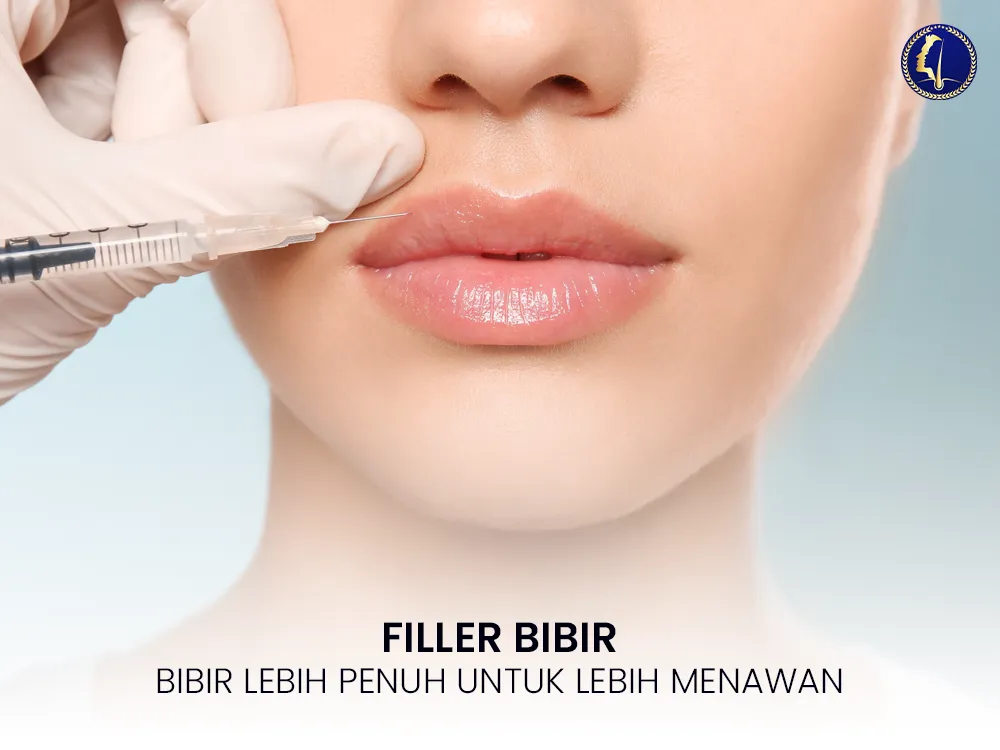
Filler Bibir: Memahami, Kebaikan, Risiko, dan Prosedur Filler bibir merupakan rawatan untuk menjadikan bibir lebih penuh dan sempurna. Berlawanan dengan rawatan mengurangkan volume bibir (lip reduction), bibir yang penuh dan berbentuk sempurna sering dianggap sebagai ciri kecantikan yang diidamkan. Untuk mencapai penampilan ini, ramai orang kini memilih untuk menjalani rawatan ini. Artikel ini akan membincangkan segala yang perlu anda ketahui tentang filler bibir, termasuk jenis-jenisnya, kebaikan dan risiko, serta prosedur dan penjagaan selepas rawatan. Apa Itu Filler Bibir? Filler bibir adalah prosedur kosmetik yang melibatkan suntikan bahan khas ke dalam bibir untuk menambah volum dan memperbaiki bentuk bibir. Prosedur ini bertujuan untuk memberikan bibir yang lebih penuh dan berbentuk menarik tanpa memerlukan pembedahan invasif. Bahan utama yang digunakan dalam pengisi bibir biasanya adalah asid hyaluronik, satu bahan yang secara semula jadi terdapat dalam tubuh manusia. Jenis-Jenis Filler Bibir Asid Hyaluronik : Asid hyaluronik adalah bahan paling popular dalam rawatan ini. Ia adalah bahan semulajadi yang terdapat dalam tisu penghubung, kulit, dan mata. Asid hyaluronik membantu mengekalkan kelembapan dan memberikan sokongan struktur pada kulit. Filler ini yang mengandungi asid hyaluronik membantu menambah volum bibir dan memberikan hasil yang semulajadi. Kesan daripada pengisi jenis ini biasanya bertahan antara 6 hingga 12 bulan. Kolagen : Kolagen adalah protein yang memberikan kekuatan dan keanjalan kepada kulit. Filler bibir yang mengandungi kolagen digunakan untuk meningkatkan keanjalan dan mengurangkan kedutan di bibir. Walau bagaimanapun, penggunaan kolagen sebagai filler bibir kurang popular berbanding asid hyaluronik kerana risiko reaksi alergi yang lebih tinggi dan hasil yang kurang tahan lama. Bahan Sintetik : Terdapat juga filler bibir yang menggunakan bahan sintetik seperti polimetil metakrilat (PMMA). PMMA adalah bahan yang memberikan hasil yang lebih kekal berbanding filler lain. Namun, bahan ini juga datang dengan risiko komplikasi yang lebih tinggi dan memerlukan pertimbangan yang lebih teliti sebelum digunakan. Sel Stem : Filler bibir berasaskan sel stem adalah teknologi terbaru yang masih dalam penyelidikan dan perkembangan. Prosedur ini melibatkan penggunaan sel stem untuk merangsang pertumbuhan tisu dan meningkatkan volum bibir. Walaupun menjanjikan hasil yang lebih tahan lama, teknologi ini masih memerlukan lebih banyak kajian dan bukti klinikal sebelum diterima secara meluas. View this post on Instagram A post shared by Glojas Spec Plastic Surgery, Hair Transplant, Aesthetic Malaysia (@glojasspecialist) Kebaikan Filler Bibir Penambahbaikan dalam Kecantikan : Rawatan ini dapat membantu memperbaiki penampilan bibir yang nipis atau tidak seimbang. Ia boleh memberikan bibir yang lebih penuh, membentuk semula bibir yang asimetrik, dan mengurangkan garisan halus di sekitar bibir. Ini meningkatkan keyakinan diri individu dan memberikan wajah yang lebih segar dan muda. Prosedur Tidak Invasif : Salah satu kelebihan utama rawatan ini ialah ia adalah prosedur yang tidak invasif. Ini bermaksud tiada pembedahan besar diperlukan, dan proses pemulihan biasanya lebih cepat berbanding pembedahan kosmetik lain. Suntikan dilakukan dengan jarum halus, dan kebanyakan pesakit hanya mengalami kesakitan yang minimum. Kesan Serta-Merta : Salah satu daya tarik utama filler bibir adalah hasilnya yang segera. Setelah prosedur selesai, pesakit dapat melihat perubahan pada bibir mereka serta-merta. Walau bagaimanapun, hasil akhir mungkin memerlukan beberapa hari untuk sepenuhnya jelas apabila bengkak dan kemerahan reda. Penjagaan Selepas Prosedur yang Mudah : Penjagaan selepas prosedur filler bibir adalah agak mudah. Pesakit biasanya disarankan untuk mengelakkan aktiviti yang boleh menyebabkan tekanan atau kecederaan pada bibir dalam tempoh beberapa hari selepas suntikan. Kebanyakan pesakit dapat kembali kepada aktiviti harian mereka dalam tempoh yang singkat. Risiko dan Kesan Sampingan Filler Bibir Kemerahan dan Bengkak : Kemerahan dan bengkak adalah kesan sampingan yang biasa selepas prosedur filler bibir. Ini adalah reaksi normal terhadap suntikan dan biasanya reda dalam beberapa hari. Untuk mengurangkan ketidakselesaan, pesakit boleh menggunakan kompres sejuk pada kawasan yang terjejas. Kesakitan dan Ketidakselesaan : Beberapa pesakit mungkin mengalami kesakitan atau ketidakselesaan selepas suntikan. Walau bagaimanapun, kebanyakan filler bibir mengandungi anestetik tempatan yang membantu mengurangkan kesakitan semasa dan selepas prosedur. Jika ketidakselesaan berlanjutan, pesakit disarankan untuk berunding dengan penyedia perkhidmatan kesihatan. Komplikasi Jangkitan : Seperti prosedur suntikan lain, terdapat risiko jangkitan selepas filler bibir. Menjaga kebersihan kawasan suntikan dan mengikuti arahan penjagaan selepas prosedur adalah penting untuk mengurangkan risiko jangkitan. Pesakit perlu melaporkan sebarang tanda jangkitan seperti kemerahan teruk, nanah, atau demam kepada doktor mereka. Reaksi Alahan : Walaupun jarang berlaku, terdapat kemungkinan reaksi alahan terhadap bahan filler. Reaksi ini boleh termasuk gatal-gatal, ruam, atau bengkak yang berlebihan. Pesakit dengan sejarah alahan atau sensitiviti kulit perlu memberitahu penyedia perkhidmatan kesihatan mereka sebelum menjalani prosedur. Ketidakpuasan Terhadap Hasil : Ada kalanya pesakit mungkin tidak berpuas hati dengan hasil filler bibir. Ini boleh disebabkan oleh faktor seperti teknik suntikan, jenis pengisi yang digunakan, atau jangkaan yang tidak realistik. Pesakit perlu berbincang dengan penyedia perkhidmatan untuk menguruskan jangkaan mereka dan mencari penyelesaian jika diperlukan. Prosedur Filler Bibir Persediaan : Sebelum menjalani prosedur, pesakit perlu menjalani konsultasi dengan penyedia perkhidmatan kesihatan untuk membincangkan matlamat dan keperluan mereka. Penyedia akan menilai keadaan bibir, sejarah perubatan, dan jenis filler yang paling sesuai. Jika pesakit mempunyai alahan atau keadaan kesihatan tertentu, ini perlu dibincangkan untuk memastikan keselamatan prosedur. Prosedur Suntikan : Prosedur filler bibir biasanya memakan masa antara 15 hingga 30 minit. Penyedia akan membersihkan kawasan bibir dan mungkin menggunakan anestetik tempatan untuk mengurangkan ketidakselesaan. Suntikan filler akan dilakukan dengan jarum halus atau kanula, bergantung kepada teknik yang digunakan. Selama prosedur, penyedia akan memantau hasil untuk memastikan bibir mendapat bentuk dan volum yang diinginkan. Penjagaan Selepas Prosedur : Selepas prosedur, pesakit perlu mengikuti arahan penjagaan yang diberikan oleh penyedia. Ini termasuk mengelakkan sentuhan atau tekanan pada bibir, tidak melakukan aktiviti fizikal berat, dan mengelakkan paparan matahari secara langsung. Menggunakan kompres sejuk boleh membantu mengurangkan bengkak dan kemerahan. Pesakit juga disarankan untuk minum banyak air dan mengelakkan makanan yang boleh menyebabkan iritasi. Temujanji Susulan : Temujanji susulan mungkin diperlukan untuk menilai hasil dan membuat penyesuaian jika perlu. Penyedia akan memantau perkembangan dan memastikan tiada komplikasi. Jika terdapat sebarang kebimbangan atau isu, pesakit perlu berunding dengan penyedia mereka untuk mendapatkan nasihat dan rawatan lanjut. Kesimpulan Filler bibir adalah prosedur kosmetik yang semakin popular untuk mendapatkan bibir yang lebih penuh dan berbentuk menarik tanpa perlu menjalani pembedahan besar. Walaupun prosedur ini menawarkan banyak
Transform Your Body in 5 Steps With Liposuction Guide
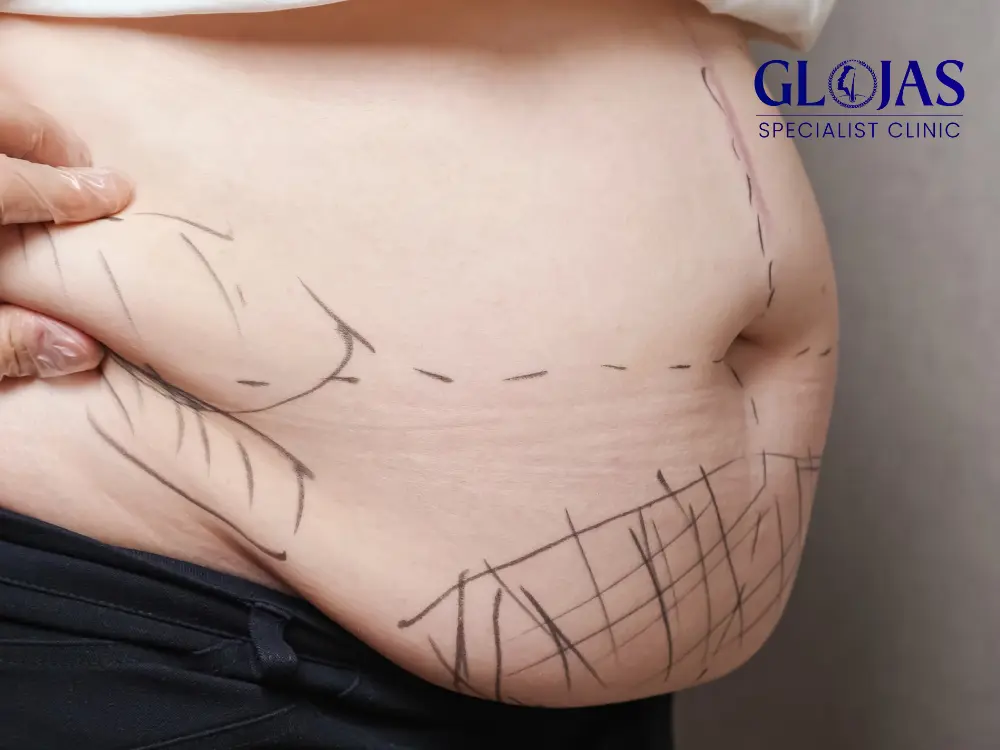
Liposuction is a highly popular cosmetic procedure designed to remove excess fat from specific areas of the body, helping individuals achieve their desired shape and contour. Whether you’re struggling with stubborn fat deposits that don’t respond to diet and exercise or simply looking to refine your body silhouette, liposuction offers a proven solution. In this comprehensive guide, we will explore the ins and outs of liposuction, covering everything from the procedure itself to recovery and results. What is Liposuction? Liposuction, also known as lipoplasty or lipo, is a surgical procedure that removes fat from the body using suction. It is typically used on areas such as the abdomen, thighs, buttocks, neck, back, and arms. The procedure involves making small incisions through which a thin tube called a cannula is inserted to break up and suction out the fat. The goal of liposuction is not just weight loss but to reshape and contour areas of the body that have not responded well to other weight loss methods. It’s important to note that liposuction is not a treatment for obesity, nor does it remove cellulite or stretch marks. Types of Liposuction Techniques There are several techniques used in liposuction, each with its advantages depending on the patient’s needs and the surgeon’s expertise. Here are some of the most common techniques: 1. Tumescent Liposuction Tumescent liposuction is the most common form of the procedure. It involves injecting a large volume of saline solution, local anesthesia, and epinephrine into the fat before removal. This solution helps to numb the area, minimize blood loss, and ease fat removal. 2. Ultrasound-Assisted Liposuction (UAL) This technique uses ultrasound waves to liquefy the fat, making it easier to remove. UAL is particularly effective for areas with dense fat deposits and is often used in conjunction with tumescent liposuction for optimal results. 3. Laser-Assisted Liposuction (LAL) Laser-assisted liposuction utilizes laser energy to liquefy fat cells, which are then suctioned out. The laser also stimulates collagen production, which can result in tighter skin after the procedure. 4. Power-Assisted Liposuction (PAL) Power-assisted liposuction involves a vibrating cannula that helps break up fat cells more efficiently, reducing the effort required by the surgeon and potentially leading to a quicker procedure with less bruising. Who is a Good Candidate for Liposuction? Liposuction is best suited for individuals who are close to their ideal body weight but have localized fat deposits that have not responded to diet and exercise. Good candidates typically have firm, elastic skin and are in good overall health. It’s important to have realistic expectations and understand that liposuction is intended for body contouring, not significant weight loss. Individuals with certain medical conditions, such as heart disease, diabetes, or a weakened immune system, may not be suitable candidates for liposuction. It’s essential to discuss your medical history with your surgeon to determine if liposuction is right for you. The Liposuction Procedure: What to Expect Understanding what happens during the liposuction procedure can help ease any anxiety and prepare you for the experience. Here’s a step-by-step overview of the process: 1. Consultation and Planning The journey begins with a thorough consultation with a board-certified plastic surgeon. During this meeting, you’ll discuss your goals, medical history, and any concerns you may have. The surgeon will evaluate your areas of concern, discuss the best liposuction technique for your needs, and develop a customized treatment plan. 2. Anesthesia On the day of the surgery, anesthesia will be administered to ensure comfort during the procedure. Depending on the extent of the liposuction and the technique used, this could be local anesthesia, sedation, or general anesthesia. 3. Fat Removal Small incisions are made in the targeted areas, and the cannula is inserted to begin the fat removal process. The cannula is moved back and forth to break up the fat, which is then suctioned out of the body. The amount of fat removed can vary, but surgeons typically remove between 1 to 10 pounds of fat during a single session. 4. Closing the Incisions After the desired amount of fat is removed, the incisions are closed with sutures. In some cases, drains may be placed to remove any excess fluid that accumulates post-surgery. 5. Recovery Recovery time varies depending on the extent of the procedure and the individual’s health. Most people can return to work within a week, but strenuous activities should be avoided for at least a month. Swelling and bruising are common after liposuction, but these typically subside within a few weeks. Compression garments are often recommended to help reduce swelling and support the healing process. Results and Long-Term Expectations The results of liposuction can be seen almost immediately, but final results may take a few months to fully develop as swelling subsides. The removed fat cells are permanently gone, but maintaining the results requires a healthy lifestyle, as remaining fat cells can still enlarge if weight is gained. Liposuction can provide a more sculpted and proportionate figure, boosting confidence and enhancing the overall appearance. However, it’s important to remember that liposuction does not prevent future weight gain, and long-term success depends on maintaining a balanced diet and regular exercise. Common Risks and Complications While liposuction is generally safe, like any surgical procedure, it comes with risks. Potential complications include infection, bleeding, scarring, and changes in skin sensation. Rare but serious risks include fat embolism, where fat enters the bloodstream, and complications related to anesthesia. Choosing a highly experienced and board-certified plastic surgeon can significantly reduce the risk of complications. It’s also important to follow all pre- and post-operative instructions provided by your surgeon. Frequently Asked Questions (FAQs) 1. How long do liposuction results last? Liposuction results are long-lasting as the fat cells removed do not return. However, weight gain can cause remaining fat cells to expand, potentially altering the results. 2. Can liposuction remove cellulite? Liposuction is not designed to remove cellulite, as cellulite is caused by fibrous connective tissue beneath the skin. Other treatments specifically target cellulite. 3. Is
Hair Injections for Alopecia: A Comprehensive Guide
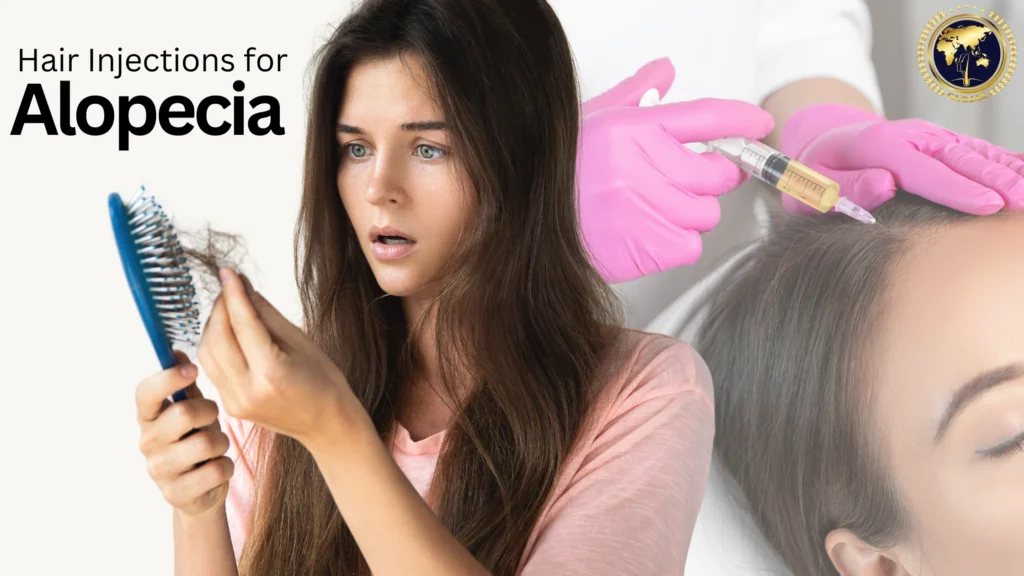
Hair Injections for Alopecia – Alopecia, or hair loss, can be a distressing condition for many. While various treatment options exist, hair injections have emerged as a promising approach. This blog delves into the different types of hair injections used to treat alopecia, their benefits, and why GLOJAS Clinic is a leading provider in this field. Understanding Hair Injections: A Closer Look Hair injections involve introducing specific substances into the scalp to stimulate hair growth and combat hair loss. Platelet-Rich Plasma (PRP) Injections: PRP therapy involves extracting a patient’s blood, separating the platelet-rich plasma, and injecting it into the scalp. Platelets contain growth factors that stimulate hair follicle regeneration. Benefits of Hair Injections: Restoring Hair Growth Hair injections offer several potential benefits for individuals with alopecia: Hair Regrowth: Both corticosteroid and PRP injections can induce hair regrowth in suitable candidates. Reduced Inflammation: Corticosteroid injections effectively reduce inflammation associated with alopecia areata. Minimal Side Effects: Hair injections are generally well-tolerated with minimal side effects. Non-Surgical Approach: Unlike hair transplants, hair injections are a non-surgical option. Choosing the Right Hair Treatment: Personalized Approach The best hair injection treatment depends on the type of alopecia, its severity, and individual factors. A dermatologist or hair specialist can determine the most suitable option. Alopecia Areata: Corticosteroid injections are often the first-line treatment for this condition. Androgenetic Alopecia: PRP therapy may be beneficial for slowing hair loss and stimulating new growth. Telogen Effluvium: Addressing the underlying cause of stress or illness is often the primary focus, but PRP might be considered as a supportive treatment. Why Choose GLOJAS Clinic for Your Hair Loss Treatment? At GLOJAS Clinic, we understand the emotional impact of hair loss and offer comprehensive solutions. Here’s why we stand out: Experienced Dermatologists: Our team of qualified dermatologists specializes in hair loss treatment and provides personalized care. Advanced Treatment Options: We offer both corticosteroid and PRP injections, tailoring treatments to individual needs. Focus on Patient Well-being: We prioritize patient comfort and support throughout the treatment journey. State-of-the-Art Technology: We utilize advanced techniques and equipment for optimal results. Holistic Approach: We address not only the physical aspects of hair loss but also the emotional impact. Hair loss can be a challenging experience, but with the right treatment and support, you can regain your confidence. GLOJAS Clinic offers a comprehensive approach to hair loss, including hair injection therapies. Schedule a consultation with our team today. We can assess your hair loss condition, discuss treatment options, and create a personalized plan to help you achieve your hair restoration goals. Don’t let hair loss define you – take the first step towards a fuller head of hair with GLOJAS Clinic! Facebook Twitter LinkedIn Reddit Pinterest WhatsApp
Understanding the Critical Stages of Gynecomastia: A Comprehensive Guide
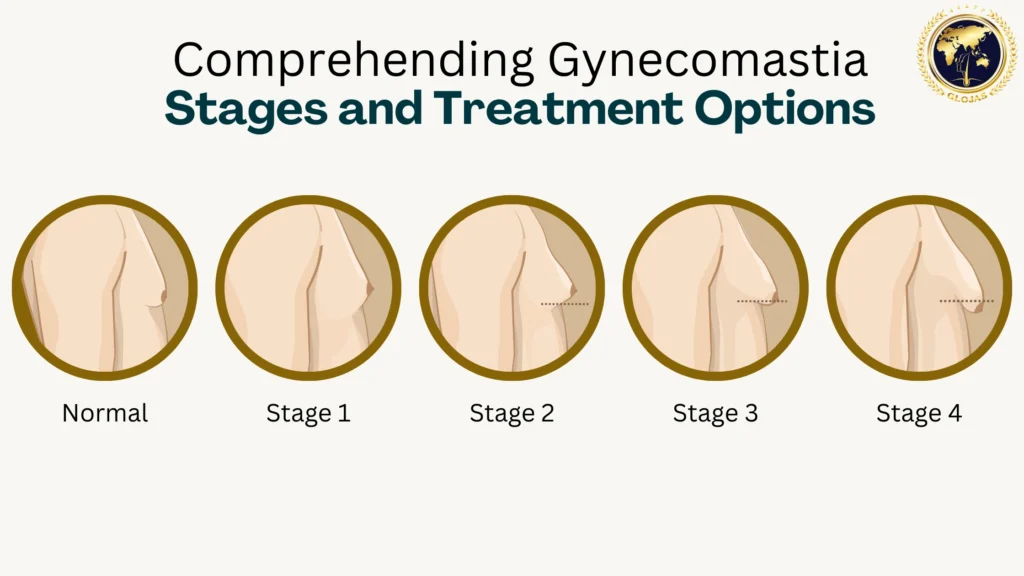
Gynecomastia, a condition characterized by the enlargement of breast tissue in males, is often a cause of concern for those affected. Understanding the stages of gynecomastia is crucial for both early detection and effective treatment. This article provides a detailed examination of the various gynecomastia stages, shedding light on how the condition progresses, its causes, and potential treatment options. What is Gynecomastia? Gynecomastia is the benign enlargement of male breast tissue, typically caused by an imbalance of the hormones estrogen and testosterone. While it can occur at any age, it is most commonly seen in newborns, adolescents, and older men. This condition can affect one or both breasts and may result in discomfort, tenderness, and psychological distress. The Four Stages of Gynecomastia Gynecomastia is typically classified into four distinct stages, each representing the severity and progression of the condition. Understanding these stages can help in identifying the best treatment approach. Stage 1: Initial Swelling (Florid Stage) Stage 1, also known as the Florid Stage, usually lasts for about six months. During this stage, the breast tissue begins to swell due to hormonal changes. This swelling is generally firm and tender, and the area may feel lumpy. This stage is often accompanied by pain or sensitivity in the breast tissue. Early intervention during this stage, such as addressing the underlying hormonal imbalance, can prevent further progression. Stage 2: Intermediate Stage (Fibrous Stage) The Intermediate Stage, or Fibrous Stage, typically occurs after six to twelve months. The breast tissue becomes more fibrous, meaning it starts to harden. At this point, the tissue is less tender, but the enlargement remains. The fibrous tissue may form around the glandular tissue, making the condition more noticeable. Treatments during this stage are still effective, but the focus often shifts towards reducing the size and hardness of the tissue. Stage 3: Advanced Stage In the Advanced Stage, which can persist beyond one year, the breast tissue becomes more prominent, with the development of dense, fibrous tissue around the gland. This stage is often associated with more significant breast enlargement and a higher likelihood of permanent tissue changes. At this stage, the tissue is typically less responsive to medical treatments, and surgical options may be considered to correct the condition. Stage 4: Severe Stage Stage 4 represents the most severe form of gynecomastia, characterized by significant breast enlargement with excess skin and tissue sagging. This stage often resembles female breasts and can lead to considerable emotional and psychological distress. Surgical intervention, such as liposuction or mastectomy, is often required to remove the excess tissue and skin, restoring a more typical male chest appearance. Causes of Gynecomastia The development of gynecomastia stages is primarily linked to hormonal imbalances, but various other factors can contribute to the condition. Hormonal Imbalance The most common cause of gynecomastia is a hormonal imbalance between estrogen and testosterone. Estrogen promotes breast tissue growth, while testosterone inhibits it. When the balance tips in favor of estrogen, gynecomastia can occur. Medications Certain medications can induce gynecomastia by altering hormone levels. These include anabolic steroids, anti-androgens used in prostate cancer treatment, certain antidepressants, and medications for heart conditions. Long-term use of these drugs can push the condition through the gynecomastia stages. Health Conditions Underlying health conditions such as liver disease, kidney failure, or hyperthyroidism can also cause hormonal imbalances, leading to gynecomastia. Additionally, tumors in the testes, adrenal glands, or pituitary gland can produce hormones that disrupt the balance. Substance Abuse The use of drugs like marijuana, alcohol, and certain recreational drugs can also lead to gynecomastia by disrupting hormonal balance. These substances may accelerate the progression of gynecomastia stages. Diagnosis of Gynecomastia Diagnosing gynecomastia typically involves a physical examination, medical history review, and, in some cases, imaging tests. Understanding which gynecomastia stage the patient is in helps tailor the treatment plan. Physical Examination During a physical exam, the doctor will assess the breast tissue’s size, texture, and tenderness. The examination may also include checking for lumps or asymmetry. The doctor will consider the patient’s age, medical history, and any medications or supplements that might be contributing to the condition. Imaging Tests Imaging tests such as mammograms or ultrasounds are sometimes used to distinguish gynecomastia from other conditions like breast cancer or fat accumulation. These tests can help determine the stage of gynecomastia and guide further treatment decisions. Treatment Options for Gynecomastia The treatment for gynecomastia depends on its stage, underlying cause, and the severity of the symptoms. Early-stage gynecomastia is often reversible with appropriate interventions, while more advanced stages may require surgical treatment. Medications In the early stages of gynecomastia, medications like selective estrogen receptor modulators (SERMs) or aromatase inhibitors may be prescribed to reduce breast tissue growth and restore hormonal balance. These medications are most effective when used in the initial stages. Lifestyle Changes For mild cases or early stages, lifestyle changes can significantly impact the condition. Reducing alcohol intake, stopping the use of recreational drugs, and losing weight can help manage the symptoms and prevent progression. Surgery In advanced or severe stages, surgery may be necessary to remove the excess breast tissue. The most common surgical procedures are liposuction, which removes fat, and mastectomy, which removes glandular tissue. Surgery is typically considered when other treatments have failed or when the condition causes significant physical or emotional discomfort. FAQs about Gynecomastia Stages What is the most common stage of gynecomastia? The most common stage is Stage 1 (Florid Stage), where the breast tissue starts to swell due to hormonal changes. This stage is often reversible with timely intervention. Can gynecomastia resolve on its own? Yes, in some cases, particularly in adolescent boys, gynecomastia can resolve on its own within six months to two years as hormone levels stabilize. Is surgery always necessary for gynecomastia? Surgery is not always necessary. It is usually reserved for advanced or severe stages when other treatments have been ineffective or when the condition causes significant distress. How long does each stage of gynecomastia last?
7 Powerful Ways to Successfully Get Rid of Stretch Marks
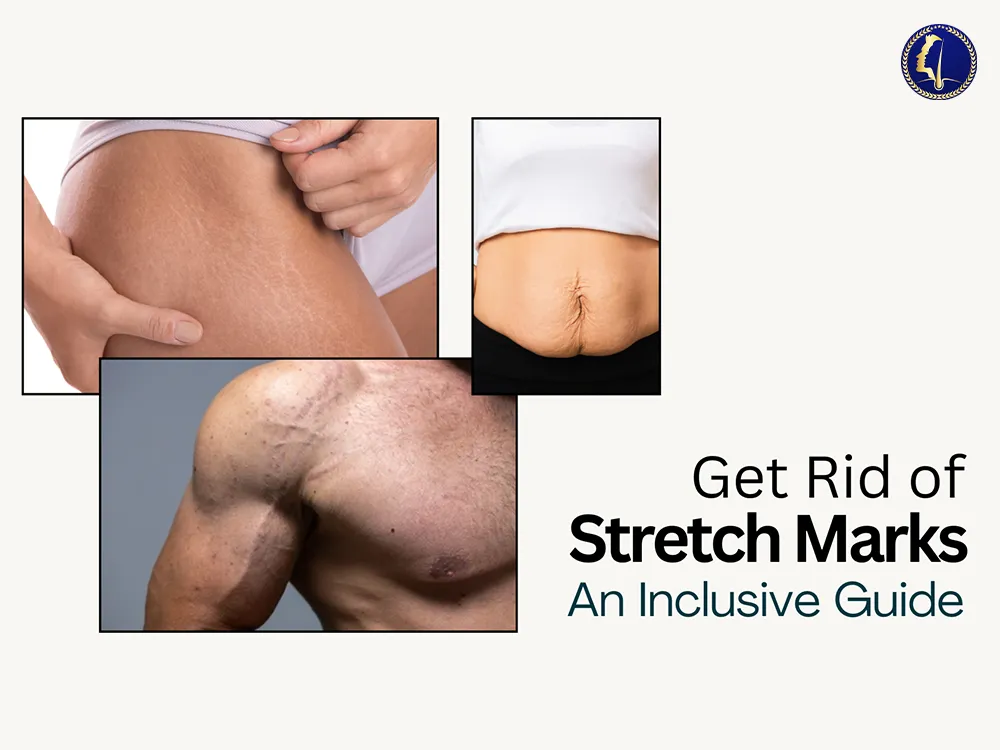
Stretch marks are a common skin concern that affects both men and women. These noticeable lines can appear due to various reasons such as rapid weight gain or loss, pregnancy, and growth spurts during puberty. If you’re wondering how to get rid of stretch marks, you’re not alone. Fortunately, there are several effective methods to reduce their appearance and restore your skin’s smoothness. In this article, we’ll explore seven powerful ways to help you successfully get rid of stretch marks. Understanding How to Get Rid of Stretch Marks Before diving into how to get rid of stretch marks, it’s essential to understand what they are. Stretch marks, medically known as striae, occur when the skin stretches or shrinks quickly. This sudden change causes the collagen and elastin, which support our skin, to rupture. As the skin heals, stretch marks may appear. They often start as red or purple lines and gradually fade to a silvery-white color over time. 1. Regular Moisturizing Keeping your skin well-hydrated is one of the simplest answers to how to get rid of stretch marks. Regular moisturizing helps improve skin elasticity, making it more resilient to stretching and reducing the appearance of existing marks. Cocoa Butter: Known for its deep moisturizing properties, cocoa butter can help fade stretch marks over time. Apply it daily to affected areas for the best results. Shea Butter: Rich in vitamins A and E, shea butter nourishes the skin and promotes healing. Almond Oil: This oil is easily absorbed and helps to soften and smoothen the skin, reducing the visibility of stretch marks. 2. Topical Retinoid Creams Topical retinoid creams are derived from vitamin A and are effective in promoting skin regeneration and improving collagen production. Tretinoin Cream: Commonly prescribed for acne, tretinoin cream can also be used to treat stretch marks by rebuilding collagen in the skin. Adapalene: Another retinoid option that can help in reducing early stretch marks’ appearance. Note: Retinoid creams should be used under medical supervision and are not recommended for pregnant or breastfeeding women. 3. Natural Remedies Exploring natural remedies is a safe and cost-effective way when considering how to get rid of stretch marks. Aloe Vera: Known for its healing properties, applying pure aloe vera gel can help soothe and repair skin damage. Coconut Oil: Its anti-inflammatory and moisturizing properties aid in healing stretch marks and improving skin texture. Lemon Juice: The natural acids in lemon juice help lighten stretch marks and promote skin regeneration. Apply fresh lemon juice to the affected area and rinse after 10 minutes. 4. Exfoliation Regular exfoliation helps remove dead skin cells and promotes new skin growth, which can reduce the appearance of stretch marks. Sugar Scrub: Mix sugar with almond oil and lemon juice to create a natural exfoliant. Gently scrub the affected areas several times a week. Coffee Scrub: Coffee grounds mixed with coconut oil make an effective exfoliating scrub that can improve blood circulation and skin elasticity. 5. Microdermabrasion Microdermabrasion is a non-invasive cosmetic procedure that can significantly reduce stretch marks’ visibility. Procedure Details: A specialized device is used to exfoliate the top layer of skin, promoting new skin growth and improving texture. Effectiveness: Multiple sessions are usually required for noticeable results, and it’s most effective on newer stretch marks. Considerations: Always consult with a certified dermatologist before undergoing microdermabrasion to ensure it’s suitable for your skin type. 6. Laser Therapy Laser therapy is a more advanced method for those seeking effective solutions on how to get rid of stretch marks. How It Works: Laser treatments stimulate collagen and elastin production by directing focused light onto the stretch marks. Types of Lasers: Fractional lasers are commonly used for stretch marks, effectively reducing their appearance with minimal downtime. Results: Significant improvement can be seen after a few sessions, though results may vary based on skin type and stretch marks’ age. Safety: Laser therapy should be performed by qualified professionals to ensure safety and effectiveness. 7. Healthy Diet and Hydration Maintaining a balanced diet and proper hydration plays a crucial role in skin health and elasticity. Collagen-Rich Foods: Incorporate foods like bone broth, leafy greens, and citrus fruits to boost collagen production. Vitamin E and C: These vitamins are essential for skin repair and can be found in nuts, seeds, fruits, and vegetables. Protein Intake: Adequate protein supports skin structure; include lean meats, eggs, and legumes in your diet. Stay Hydrated: Drinking plenty of water keeps your skin supple and reduces the likelihood of developing new stretch marks. FAQs About Getting Rid of Stretch Marks Q1: Can stretch marks disappear completely? While it’s challenging to make stretch marks disappear entirely, their appearance can be significantly reduced with proper treatment and care. Early intervention yields better results. Q2: Are over-the-counter creams effective against stretch marks? Some over-the-counter creams containing ingredients like hyaluronic acid and retinoids can help improve stretch marks’ appearance, especially when used consistently on newer marks. Q3: Is it safe to treat stretch marks during pregnancy? During pregnancy, it’s best to use natural remedies and moisturizers. Avoid retinoid creams and certain procedures like laser therapy until after childbirth. Q4: How long does it take to see results from treatments? The time varies depending on the treatment method and the individual’s skin. Natural remedies and creams may take several weeks to months, while procedures like laser therapy can show faster results. Q5: Do men get stretch marks too? Yes, stretch marks are not gender-specific. Men can develop stretch marks due to rapid weight gain, muscle growth, or growth spurts during adolescence. Q6: Can exercise help reduce stretch marks? Exercise improves blood circulation and skin elasticity, which can aid in reducing stretch marks’ appearance. Combining exercise with proper hydration and skincare yields better results. Addressing how to get rid of stretch marks involves a combination of treatments and lifestyle changes. By understanding and implementing these effective methods, you can significantly reduce stretch marks’ visibility and improve your skin’s overall health and appearance. Always consider
Hair Loss Treatment | Restore Your Hair & Confidence
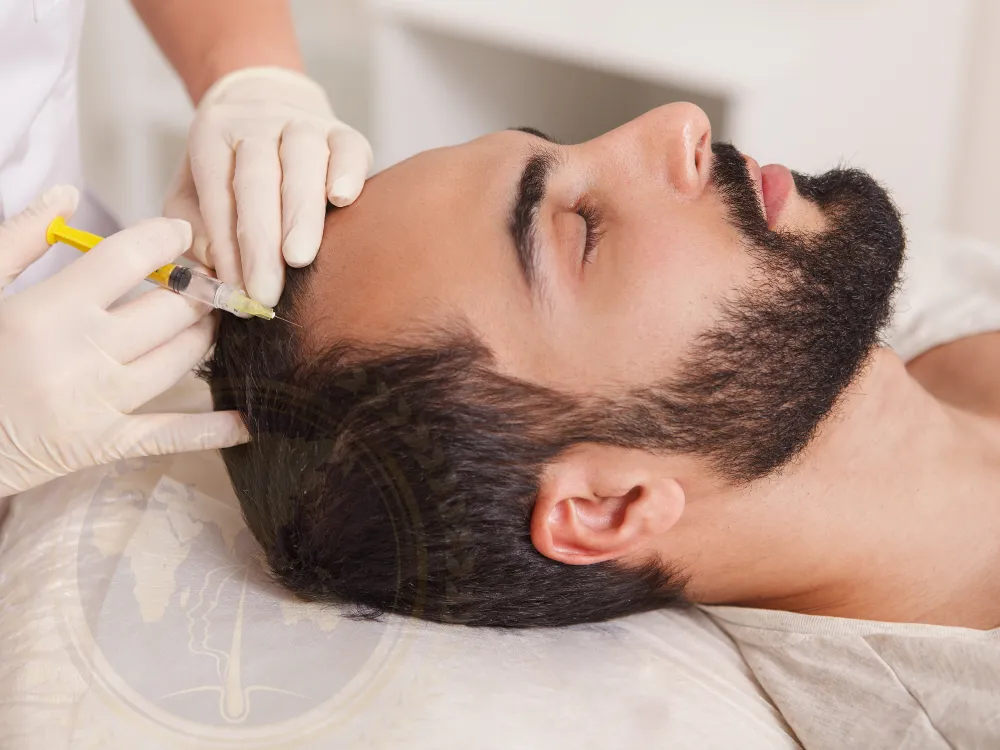
Hair Loss Treatment: Comprehensive Guide to Solutions and Remedies Hair loss is a common concern affecting millions of people globally. While it is often associated with aging, hair loss can occur at any stage of life due to various factors such as genetics, hormonal changes, medical conditions, or environmental influences. Fortunately, there are numerous treatments available that can help manage, slow down, or even reverse hair loss. This guide delves into the most effective hair loss treatments, ranging from medical interventions to natural remedies. Understanding Hair Loss: Causes and Types Causes of Hair Loss Hair loss, medically known as alopecia, can be caused by several factors. Understanding the root cause is crucial for selecting the appropriate treatment. Genetic Factors: Androgenetic alopecia, also known as male or female pattern baldness, is the most common type of hair loss. It is hereditary and can start as early as adolescence. Hormonal Imbalances: Conditions like thyroid disease, polycystic ovary syndrome (PCOS), and menopause can trigger hormonal imbalances, leading to hair loss. Medical Conditions: Autoimmune diseases, such as alopecia areata, and scalp infections can cause significant hair shedding. Nutritional Deficiencies: Lack of essential nutrients like iron, vitamin D, and protein can weaken hair follicles, causing hair to fall out. Medications: Certain drugs, including chemotherapy agents, blood thinners, and antidepressants, can lead to temporary or permanent hair loss. Stress and Lifestyle: High-stress levels, poor diet, and lack of sleep can contribute to hair thinning and loss. Types of Hair Loss Hair loss can manifest in different forms, and identifying the type is vital for treatment. Androgenetic Alopecia: Characterized by a receding hairline and thinning on the crown in men, and diffuse thinning over the crown in women. Alopecia Areata: An autoimmune condition that causes patchy hair loss on the scalp, face, or other areas of the body. Telogen Effluvium: A temporary form of hair loss caused by stress, illness, or sudden weight loss, leading to diffuse thinning. Traction Alopecia: Hair loss resulting from hairstyles that pull on the hair excessively, such as tight ponytails or braids. Medical Treatments for Hair Loss 1. Prescription Medications There are several medications available that can help combat hair loss: Minoxidil (Rogaine): An over-the-counter topical treatment that stimulates hair growth and slows down hair loss. It is effective for both men and women. Finasteride (Propecia): A prescription oral medication for men that reduces the levels of dihydrotestosterone (DHT), a hormone linked to androgenetic alopecia. Spironolactone: Often prescribed for women, this medication helps block androgens, reducing hair thinning caused by hormonal imbalances. 2. Hair Transplant Surgery Hair transplant surgery is a permanent solution for hair loss where hair follicles from one part of the body are transplanted to the balding areas. The two main techniques are: Follicular Unit Transplantation (FUT): A strip of scalp is removed, and individual follicular units are harvested and transplanted. Follicular Unit Extraction (FUE): Individual hair follicles are extracted and implanted into the thinning areas. 3. Laser Therapy Low-level laser therapy (LLLT) uses red light wavelengths to stimulate hair follicles, encouraging hair growth. It’s a non-invasive option that can be used at home with specialized devices. 4. Platelet-Rich Plasma (PRP) Therapy PRP therapy involves drawing a small amount of the patient’s blood, processing it to concentrate the platelets, and then injecting it into the scalp. The growth factors in PRP can stimulate hair follicles and promote hair growth. Natural Remedies and Lifestyle Changes 1. Nutritional Support A balanced diet rich in vitamins and minerals is essential for healthy hair. Key nutrients include: Biotin: A B-vitamin that strengthens hair and nails. Foods like eggs, nuts, and whole grains are excellent sources. Iron: Essential for oxygen transport to hair follicles. Iron-rich foods include red meat, spinach, and lentils. Vitamin D: Helps maintain healthy hair follicles. Sunlight and fortified foods are good sources. Zinc: Supports hair tissue growth and repair. Found in seafood, meat, and dairy products. 2. Essential Oils Certain essential oils have been shown to improve hair growth. They can be used in combination with carrier oils for scalp massages. Rosemary Oil: Stimulates blood circulation in the scalp, promoting hair growth. Peppermint Oil: Encourages hair growth by increasing blood flow to the scalp. Lavender Oil: Known for its calming properties, lavender oil also supports hair growth. 3. Scalp Care Maintaining a healthy scalp is crucial for preventing hair loss and promoting growth: Regular Washing: Keeps the scalp clean and free from build-up that can clog hair follicles. Exfoliation: Removes dead skin cells and encourages new hair growth. Scalp Massage: Stimulates blood circulation, improving the health of hair follicles. Alternative Treatments for Hair Loss 1. Acupuncture Acupuncture, an ancient Chinese practice, involves inserting fine needles into specific points on the body. It is believed to stimulate hair growth by improving blood flow and balancing energy levels. 2. Herbal Supplements Certain herbs are believed to promote hair health and combat hair loss: Saw Palmetto: Blocks DHT, similar to finasteride, but with fewer side effects. Ginseng: Stimulates hair follicles and promotes hair growth. Green Tea: Contains antioxidants that can help protect hair follicles from damage. 3. Stress Management Stress is a significant contributor to hair loss. Techniques such as yoga, meditation, and deep breathing exercises can help manage stress levels and reduce its impact on hair health. Consulting a Dermatologist Before starting any hair loss treatment, it’s essential to consult with a dermatologist. They can provide a proper diagnosis, rule out underlying medical conditions, and recommend the most effective treatment plan tailored to individual needs. Frequently Asked Questions About Hair Loss Treatment 1. How long does it take to see results from hair loss treatments? Most hair loss treatments require consistent use for at least 3 to 6 months before noticeable results are seen. Some treatments may take longer, depending on the severity of hair loss and the type of treatment used. 2. Can hair loss be reversed? In many cases, hair loss can be slowed, and some hair regrowth is possible, especially with early intervention. Treatments like minoxidil and finasteride
